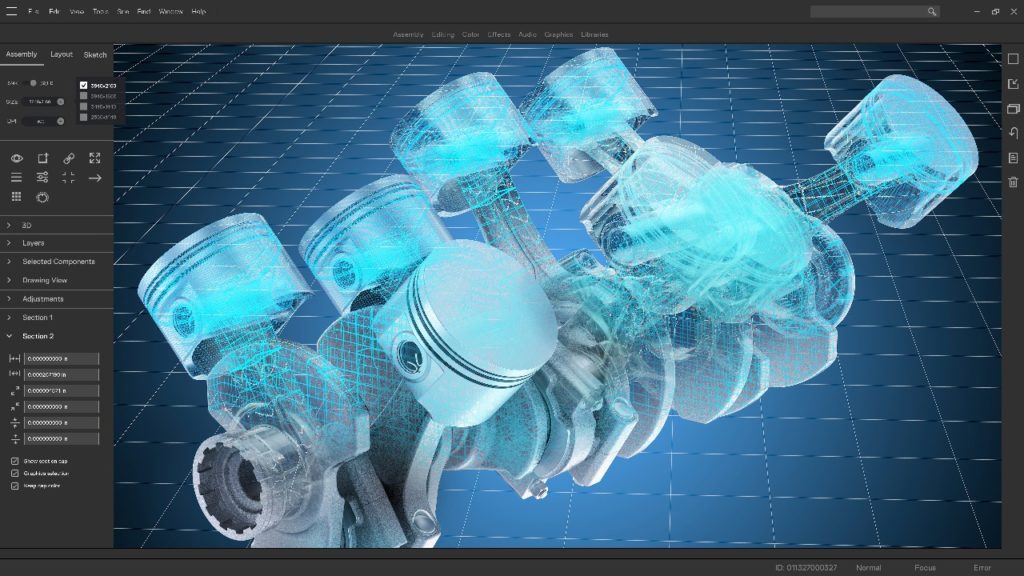AI and HPC Revolutionizes Engineering Sponsored Content by Dell Technologies

In the past, it would take months, even years for companies to identify the optimal design features that would take their work to the next level. However, technology continues to rapidly advance, giving innovators new tools and solutions to speed time to market with improved designs.
One way AI techniques can change the game is that they allow engineers to quickly approximate the results of computationally-intensive simulations. Engineering teams can replace some traditional numerical simulations with fast machine learning models to quickly consider tens of thousands of options.
In the past, these processes were time consuming. Now they can be conducted virtually and within seconds. As a result, companies can get to market faster with higher quality products.
McLaren Racing, Mercury Marine and PING are three companies who continue to push the boundaries of technology to bring the best of innovation to racing, boating and golf.
McLaren Racing relies on HPC to excel in Formula 1
In Formula One racing, seconds count. To maintain a competitive edge, continual, incremental improvements to racecar designs are the key to improving performance throughout the racing season. The team at McLaren relies on edge computing and HPC to power billions of computational fluid dynamics (CFD) simulations every season and help them shave critical seconds off race times.
Formula One racecars burn up the track at an amazing 200 miles per hour (mph) on the straightaways and can even exceed 100 mph on the corners. But in a sport where the difference between winning and losing can be measured in milliseconds, teams of engineers are working around the clock to design a better car.
Once the data is captured and analyzed trackside, it’s streamed back to the data center at McLaren Mission Control, where it’s processed and used for analysis and simulations. According to Edward Green, Head of Commercial Technology. “The team at Mission Control plays a pivotal role. They’re analyzing data, finding extra performance, in some cases analyzing live car data in overnight simulations to work out where our correlation might be. And even in the extreme cases, we’ll manufacture parts overnight or at the track to add to the car to help boost the performance.”
Mercury Marine uses HPC to maintain its legacy of innovation
Mercury Marine® has been making world-class outboards and sterndrives for more than 80 years. The
company, which started in a small machine shop in Wisconsin, has grown into the world’s largest builder of marine propulsion systems. Today, Mercury Marine is number one on the water, and the company didn’t get there by sitting still. It’s always pushing forward.
This legacy of leadership continues today as Mercury Marine pushes forward with the new Mercury V12 600hp Verado Outboard, an engine that elevates the standards of premium design and engineering. With game-changing innovations like a steerable gearcase and automatic two-speed transmission, the V12 Verado delivers an incredibly refined outboard-driving experience.
To deliver breakthrough innovations like those in the V12, the engineers at Mercury Marine rely heavily on computer-aided engineering simulations that use software tools for computational fluid dynamics (CFD) and finite element analysis (FEA). The use of computer-driven simulations allows Mercury Marine’s engineering teams to greatly accelerate the process of evaluating different design alternatives in comparison to the costly and time-consuming process of developing physical prototypes, according to Arden Anderson, a specialist in engineering simulations for Mercury Marine and its parent company, Brunswick Corporation.
“We’re running physics simulations on computer models,” Anderson explains. “A very simple way to put it would be to say it’s virtual testing. It’s not requiring a physical prototype or physical part to do the testing, but we’re doing it numerically in a computer.” The benefits of virtual design include reduced product development costs, faster testing and better time to market, Anderson notes.
PING uses HPC to create cutting-edge golf clubs
For PING, innovation is everything. The genesis for the company came in 1959 when its founder, Karsten Solheim, set his sights on designing a better putter that would improve his golf game. That putter made a “pinging” sound when striking a golf ball, which gave rise to the name of the company that would become a household name for golfers around the world.
Today, this legacy of innovation continues as PING continually drives groundbreaking advances across its product line. But now there’s a twist to the approach. Unlike the original PING putter and its first prototype, today’s product advances are often driven through innovation with data, computer-aided engineering tools and high performance computing systems — along with close collaboration with leading technology providers.
With Altair, Dell Technologies and Intel, PING gains the resources it needs to apply high performance computing systems and applications to its design strategy. This collaboration has helped PING slash design cycle times, decrease variability in product performance and improve quality — all without delaying time to market.
“Using HPC with finite element analysis and computational fluid dynamics allows us to optimize everything as much as possible, but at the end of the day, it saves us a lot of time. And that allows us to put more of our time and energy back into thinking up new, creative, innovative designs,” said Eric Morales Senior Engineer at PING.
Using HPC has significant advantages for computer-aided engineering, allowing companies to out-maneuver competitors, bring better products to market, and cut down on the amount of time needed to create new designs. With Dell Technologies’ breadth of solutions and customer-first mentality, customers have a partner they can depend and rely on to help bring their innovations to life.










